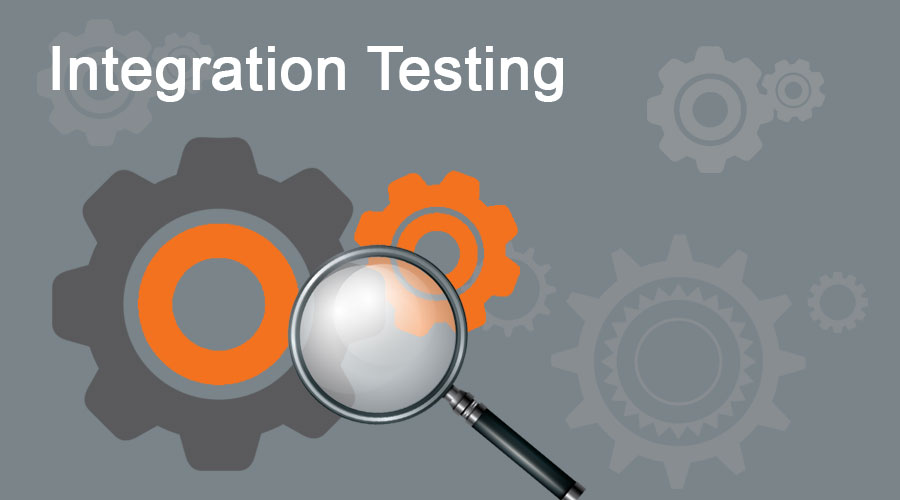Introduction to integration Testing: A Beginner’s Guide
- 1 Importance of Integration Testing:
- 1.1 Early Defect Identification:
- 1.2 Assuring Compatibility:
- 1.3 Identifying Interface Errors:
- 1.4 Increasing System Reliability:
- 2 Integrity testing strategies:
- 2.1 Top-Down Integration Testing:
- 2.2 Bottom-Up Integration Testing:
- 2.3 Techniques and Tools for Integration Testing:
- 2.4 Stubs and drivers for testing:
- 2.5 Mock Objects:
- 2.6 Continuous Integration(CI) Tools:
- 2.7 Service virtualization:
- 3 Problems with integration testing:
- 3.1 Test Environment Setup:
- 3.2 Management of Dependencies:
- 3.3 Test Data Management:
- 3.4 Debugging and Issue Isolation:
- 4 Categories of Integration Testing:
- 4.1 Big Bang Integration Testing:
- 4.2 Incremental Integration Testing:
- 4.3 Top-Down Integration Testing:
- 4.4 Bottom-Up Integration Testing:
- 4.5 Sandwich (Hybrid) Integration Testing:
- 5 Conclusion
Testing is a critical component of developing software since it helps ensure an application’s dependability and quality. Integration testing is one of the fundamental testing techniques.
Integration testing examines how various software system components interact with one another to find any potential flaws.
We will examine integration testing’s definition, significance, and execution in this beginner’s guide.
Firstly, now, what is Integration Testing?
Integration testing is a type of software testing that focuses on analyzing how different software application modules, parts, or subsystems interact with one another.
It seeks to find flaws that could appear when these elements are joined or integrated into a more extensive system.
Integrity testing ensures that integrated components function correctly and deliver the desired results.
Importance of Integration Testing:
Integration testing is crucial to software development for several reasons, including the following:
Early Defect Identification:
Integration testing aids in the early detection of faults during the development phase. Early component interaction testing allows problems to be found and fixed before they become more complicated later in the development or deployment.
Assuring Compatibility:
In intricate software systems, several components must operate in perfect harmony. Integration testing ensures these parts are in sync and can share information and data without problems.
Identifying Interface Errors:
Interactions between various components occur most frequently at interfaces. Developers can check these interfaces through integration testing for any mistakes or discrepancies in the data flow, guaranteeing adequate communication across components.
Increasing System Reliability:
Software engineers can find and fix possible weak points in the system through thorough integration testing. This increases the software application’s overall resilience and dependability.
Integrity testing strategies:
The two primary methods for integration testing are as follows:
Top-Down Integration Testing:
This testing method begins with the software programme’s primary module, which is the highest level, and works its way down to the lower-level components. The primary component is tested first; then its immediate submodules are integrated, and so on. This method guarantees that critical capabilities are evaluated early on and enables the detection of problems at higher levels early.
Bottom-Up Integration Testing:
As its name implies, the bottom-up approach begins with testing lower-level modules before gradually integrating higher-level components. It starts by testing each module separately and gradually integrating them to create more extensive subsystems. This method offers a strong foundation for developing a system with complete integration and enables the early detection of flaws in individual modules.
Techniques and Tools for Integration Testing:
Effective integration testing may be achieved with the help of a variety of tools and techniques:
Stubs and drivers for testing:
Stubs and drivers were fictitious pieces of code that replicated the behaviour of dependent modules during integration testing. Stubs serve as replacement modules, giving the module under test predefined values, whereas drivers mimic the actions of the caller module.
Mock Objects:
Mock objects imitate the actions of actual system objects. They imitate the reactions of other components with which the module interacts while isolating them for testing. Mock objects may be made by hand or with specific mocking frameworks.
Continuous Integration(CI) Tools:
Tools for continuous integration (CI) may automate the testing of the integration process, such as Jenkins, Travis CI, or GitLab CI/CD. When modifications are made to the version control system, these technologies may automatically create, test, and integrate software components, providing continuous integration and testing.
Service virtualization:
This may be utilized when dependent parts or services are inaccessible or challenging to access during testing. It entails building virtual or simulated copies of these components to imitate these components’ behaviour and allow testing without depending on the actual services.
Problems with integration testing:
The following problems with integration testing need to be resolved:
Test Environment Setup:
Setting up a test environment that accurately simulates the production environment may prove challenging, particularly when coping with distributed systems or external dependencies.
Management of Dependencies:
Managing dependencies between parts can be complex. Integration testing may be hampered if specific components are unavailable or undergoing changes.
Test Data Management:
It can take effort and careful planning to generate or collect the correct test data for different integration scenarios.
Debugging and Issue Isolation:
Identifying the source of an integration test failure and isolating the problematic component can be difficult, especially in complicated systems with many dependencies. This is known as debugging and issue isolation.
Categories of Integration Testing:
Integration testing may be further divided into many categories depending on the scope and purpose of the test. Here are some of the often employed types:
Big Bang Integration Testing:
This method entails simultaneously integrating every module or component to create the entire system. It is frequently used when the system is modestly sized or when it is difficult to test individual components independently. However, the lack of tests in stages may make it difficult to isolate and troubleshoot problems.
Incremental Integration Testing:
The system is constructed and tested incrementally using this method, commencing with integrating a small number of parts or modules simultaneously. The testing develops gradually, with later iterations incorporating more components. This makes it possible to identify flaws earlier and isolate problems more quickly.
Top-Down Integration Testing:
As previously noted, top-down integration testing starts by first testing the primary module or high-level elements and then gradually integrating lower-level modules. During the first testing phases, stub parts emulate the behaviour of the lower-level modules that still need to be developed. Although testing of lower-level parts may be delayed, this technique makes validating essential capabilities easier.
Bottom-Up Integration Testing:
The bottom-up methodology begins with testing the lower-level modules and eventually incorporates higher-level components, as was previously mentioned. In the early stages of testing, drivers are used to emulate the behaviour of higher-level modules. This method enables early module testing and helps locate and fix lower-level problems.
Sandwich (Hybrid) Integration Testing:
This technique combines top-down and bottom-up approaches to integration testing. High-level and low-level components are tested simultaneously, and intermediate-level modules are gradually integrated. This method compromises the quick validation of crucial features and the quick discovery of flaws in lower-level modules.
Conclusion
The method of testing software must include integration testing. It ensures that a software application’s many parts function harmoniously and deliver the required results.
Integration testing is essential in producing high-quality software since it helps to find flaws early, improve compatibility, and increase system stability.
Developers may successfully do integration testing and guarantee the achievement of their software development endeavours by comprehending the tools and methods involved.



















